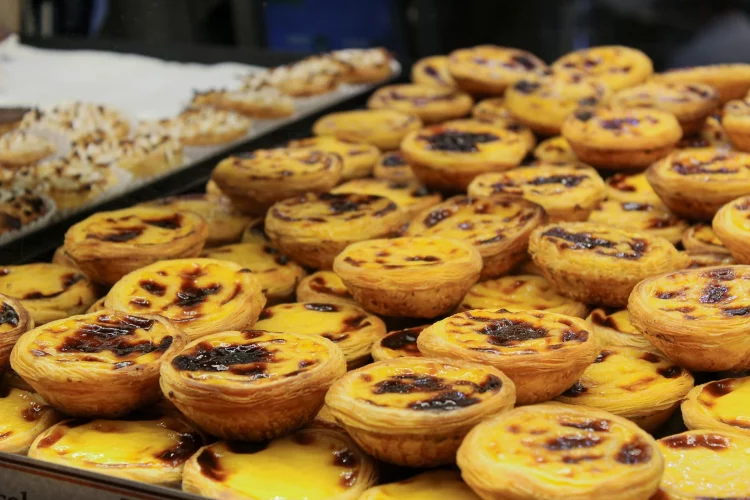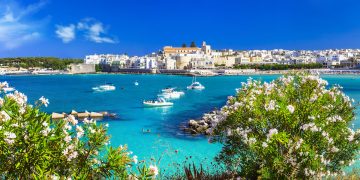Lisbon and Barcelona—two sun-drenched European capitals brimming with culture, history, and seaside charm—are no longer just lauded for their iconic architecture or cobbled alleyways. In recent years, these cities have become culinary destinations in their own right, sparking a quiet food revolution that’s transforming local dining scenes and drawing global attention. With an irresistible blend of traditional roots and avant-garde experimentation, the kitchens of Lisbon and Barcelona are rewriting their gastronomic identities. But this food renaissance isn’t just about flashy Michelin stars or fusion plates—it’s about a deep, deliberate reconnection with heritage, ingredients, and a growing appetite for creative risk-taking. So what exactly is fueling this delicious disruption? It’s a tale of tradition reimagined, youthful ambition, and a whole lot of seafood.
Lisbon’s Culinary Awakening: From Traditional Portuguese Dishes to Innovative New Flavors
Lisbon, long overshadowed by flashier European capitals, is finally having its moment in the culinary sun. For decades, the city was known for comforting classics—salt cod (bacalhau) in its many incarnations, grilled sardines, hearty stews, and of course, the iconic pastel de nata. These dishes remain beloved, but they now share the stage with a new wave of chefs determined to push Portuguese cuisine forward without erasing its soul.
The change began subtly. As the city became a magnet for digital nomads, artists, and returning expats, Lisbon’s food scene started to diversify. The local palate—once firmly rooted in tradition—opened up to global influences. But unlike other cities where culinary trends can veer into gimmick territory, Lisbon’s chefs kept the transformation grounded. They began experimenting with indigenous ingredients—Atlantic seafood, DOP cheeses, wild herbs from Alentejo—and presenting them in new forms.
Take José Avillez, whose Belcanto was the first Lisbon restaurant to earn two Michelin stars. His dishes pay tribute to Portuguese flavors but with modern flair—like his “garden of the goose that laid the golden egg,” a whimsical nod to fairy tales with edible flowers and truffle nuances. Meanwhile, younger talents like André Lança Cordeiro at Essencial are gaining ground with minimalism and ingredient-driven menus that emphasize what Portugal does best: simplicity done beautifully.
Beyond fine dining, the city’s casual culinary culture is also evolving. Neighborhoods like Príncipe Real, Alfama, and Cais do Sodré have become fertile grounds for gastrobars, international fusion joints, and natural wine bistros. Yet the most impressive aspect of Lisbon’s food awakening may be how it celebrates—not replaces—its roots. Places like Time Out Market and Mercado de Campo de Ourique bring together old and new under one roof, letting traditional pastéis share counter space with contemporary vegan plates or experimental tapas.
There’s also a noticeable shift toward sustainability and seasonality. Lisbon’s chefs are more committed than ever to locally sourced produce, fresh-caught fish, and zero-waste principles. This shift isn’t just aesthetic—it’s philosophical. The food revolution here isn’t a trend; it’s a movement that reflects the city’s evolving identity: proud, creative, and increasingly conscious.
Barcelona’s Gastronomic Boom: Catalonia’s Diverse Food Culture and Cutting-Edge Restaurants
If Lisbon is the rising star, Barcelona is the bold icon of culinary reinvention. Ever since Ferran Adrià changed the culinary world with his molecular gastronomic creations at elBulli, Barcelona and the wider Catalonia region have been synonymous with fearless innovation. But Barcelona’s food revolution today isn’t only about foams and spherification—it’s about storytelling, sustainability, and a renewed appreciation for the ingredients that define Catalan culture.
Barcelona is a city of contrasts: you can dine in a centuries-old taverna on botifarra amb mongetes (Catalan sausage with white beans), then walk two blocks to a chic concept restaurant serving dry-aged tuna tartare with seaweed caviar. This juxtaposition defines the city’s modern culinary identity. It’s a place where tradition isn’t discarded—it’s dissected, reassembled, and plated anew.
Take Disfrutar, consistently ranked among the world’s best restaurants, where three elBulli alumni serve a wildly inventive tasting menu that challenges perceptions of flavor and form. But alongside this experimental vanguard, there’s a vibrant return to localism. Restaurants like Can Cisa/Bar Brutal are redefining Catalan dining with hyperlocal ingredients and natural wines. Meanwhile, Casa Xica, run by a Spanish-Asian couple, blends Catalan tradition with Southeast Asian flavors—think miso-infused croquettes and pork belly with kimchi.

Barcelona’s food scene also benefits from a rich tapestry of regional diversity. Catalonia’s proximity to the sea, mountains, and agricultural heartlands means chefs have unparalleled access to premium produce. This variety has made farm-to-table dining not just a philosophy but a default standard. Chefs frequent local markets like La Boqueria and Mercat de Sant Antoni, curating daily menus based on what’s fresh and seasonal.
The boom extends beyond restaurants. Pop-up dining events, rooftop supper clubs, and culinary incubators like Espai Sucre (a dessert-only cooking school and experimental lab) are shaping a new generation of chefs and food entrepreneurs. Street food is also making waves—with gourmet food trucks and market stalls serving everything from vegan paella to Catalan-style pulled pork.
Barcelona’s culinary energy lies in its diversity, its boldness, and its deep-rooted love for the act of eating. Here, food is celebration, rebellion, nostalgia, and innovation—all served on the same plate.
Must-Try Dishes: Top Food Experiences in Both Cities for Any Foodie Traveler
No foodie pilgrimage to Lisbon or Barcelona is complete without indulging in their iconic and emerging dishes. While fine dining is a thrill, it’s often the simpler, local bites that leave the most lasting memories.
In Lisbon, begin with a traditional bacalhau à brás—salt cod mixed with onions, fried potatoes, and egg. Follow it up with a bifana (garlic-marinated pork sandwich) from a street stall or a plate of ameijoas à bulhão pato (clams in garlic, olive oil, and cilantro). Don’t miss a stop at Manteigaria for freshly baked pastéis de nata, ideally sprinkled with cinnamon and devoured standing at the counter. For the curious, dishes like choco frito (fried cuttlefish) or alheira (a garlicky sausage with a rich history) offer deeper dives into Portugal’s culinary layers.
Wine lovers should explore Portuguese varietals like Vinho Verde, Bairrada reds, or Douro blends, while more adventurous palates can sip on Ginjinha, a cherry liqueur traditionally served in chocolate cups.
In Barcelona, start your culinary journey with pa amb tomàquet (bread rubbed with tomato and olive oil), a humble yet essential Catalan staple. From there, move on to esqueixada (salt cod salad), calçots (chargrilled green onions served with romesco sauce during winter), and fideuà, a noodle-based cousin of paella. Tapas are an institution—sample bombas (meat-stuffed potato balls), anchovies from L’Escala, or pimientos de Padrón, blistered and sea-salted green peppers.
Sweet tooths can rejoice in crema catalana, the local answer to crème brûlée, while drinks like vermut (aromatic vermouth served over ice with an olive and orange slice) make for the perfect aperitif.
But the real secret to memorable food in both cities? Go beyond guidebooks. Step into that crowded taberna with no English menu. Follow the locals to that buzzing market stall. Trust your senses. In Lisbon and Barcelona, culinary magic often happens when you least expect it.
Conclusion: Why Lisbon and Barcelona Are Redefining Europe’s Food Capital Map
The food revolutions in Lisbon and Barcelona are more than a matter of new restaurants or international acclaim—they’re reflections of broader cultural awakenings. In both cities, there’s a palpable sense that food is not just sustenance or entertainment, but an evolving art form, a medium of expression, and a vehicle for identity. These cities are not merely catching up with global food capitals—they’re rewriting the rules, using their own stories, flavors, and rhythms.
Lisbon, with its quiet confidence and respect for authenticity, is transforming itself dish by dish into one of Europe’s most soulful food destinations. Barcelona, ever the rebel, continues to push boundaries and provoke conversation from the kitchen outwards.
So, whether you’re looking for a culinary vacation filled with Michelin-level meals, or street-side discoveries that spark joy with every bite, Lisbon and Barcelona are calling—and their kitchens are hotter than ever.





















